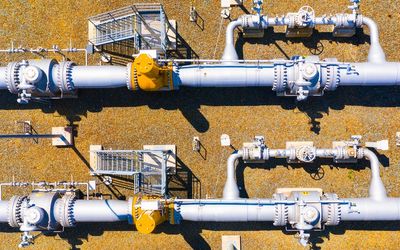Infineon Technologies XENSIV PAS CO2 Sensor2Go Evaluation Kit
A plug-and-play CO2 sensor evaluation kit that provides direct PPM readout of the XENSIV PAS CO2 sensor through the micro-USB interface.
Technical Specifications
| Operating range | 0 ppm to 10000 ppm |
| Accuracy | ± (30 ppm +3%) of reading between 400 ppm and 5000 ppm |
| Lifetime | 10 years at 1 measurement/minute |
| Operating temperature | 0 °C to 50 °C |
| Operating relative humidity | 0% to 85% (non-condensing) |
| Interface | I2C, UART, PWM, Micro-USB |
| Supply voltage (emitter) | 12.0 |
| Supply voltage (other components) | 3.3 |
| Average power consumption | 30 |
| Package dimension | 13.8 x 14 x 7.5 mm |
Overview
The Infineon Technologies XENSIV PAS CO2 Sensor2Go Evaluation Kit is designed to offer a convenient means to measure and evaluate the XENSIV PAS CO2 sensor. The latter is a real CO2 sensor based on the photoacoustic spectroscopy (PAS) technology, which makes it smaller and cheaper compared to traditional nondispersive infrared (NDIR) CO2 sensors.
Plug-and-Play Sensor Evaluation
The Sensor2Go evaluation kit is a multi-function sensor development platform available in two form factors. Both versions of the evaluation boards interface with the XENSIV PAS CO2 sensor and provide a convenient readout of sensor data through the micro-USB interface. The evaluation kit serves as a plug-and-play interface to the CO2 sensor through either a direct connection to PC, or alternatively via the onboard I2C interface.
The evaluation kit can be used for a wide range of applications ranging from building automation and city management to home appliances and smart home IoT (Internet of Things) devices relying on accurate CO2 measurement. The sensor development boards provide access to all key functionalities of the XENSIV PAS CO2 sensor, while also allowing sensor history logging for thorough evaluation. The evaluation process is streamlined through the Infineon toolbox, which offers a convenient GUI (Graphical User Interface).
Miniaturized Using MEMS Technology
The XENSIV PAS CO2 Sensor2Go Evaluation Kit is positioned as a solution for engineers, developers, and researchers seeking to integrate real CO2 sensing capabilities into projects where space is at a premium. Unlike traditional NDIR CO2 sensors, the XENSIV PAS CO2 sensor relies on the PAS principle. This implementation utilizes a MEMS (Micro Electronic Mechanical Systems) microphone to detect CO2 concentration in the air and convert it into a direct PPM readout, in conjunction with the onboard microcontroller.
NDIR sensors have a relatively larger footprint due to the need for an air gap between the IR emitter and detector. The PAS technology obviates the need for an infrared detector (photodiode) and instead uses a MEMS microphone to measure the pressure variations generated by CO2 molecules within the sensor cavity. This significantly reduces the size of the sensor because, unlike a photodiode, a microphone can be placed in close proximity to the IR emitter. This makes it possible to fit the XENSIV PAS CO2 sensor in a diminutive surface-mount device (SMD) package.
Diverse Applications
The XENSIV PAS CO2 sensor’s versatility extends to building automation, where it can be used for applications, such as demand controlled ventilation, air handler units, and air exchangers to improve indoor air quality at large volumes. The sensor package is cost effective enough to be deployed in home appliances, such as air purifiers and air conditioners.
Meanwhile, its small footprint and SMD form factor allow it to be integrated into compact smart home IoT devices, such as thermostats, speakers, baby monitors, personal assistants, indoor air quality monitors, and smart lights with ease.
Where to find it

Mouser Electronics
Mouser Electronics is a worldwide leading authorized distributor of semiconductors and electronic components.
References
Recommended Specs
Continue Reading
Next-Generation Sensors Built from the Intersection of Collaboration, Sustainability, and Innovation: A Conversation with ScioSense's CEO
We sit down with Sciosense CEO, Stefan Raible to discuss the future of sensors and how collaboration is key to engineering success.








